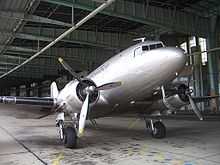Raisin Bombers


Raisin Bombers (German Rosinenbomber) or (in English) "Candy Bombers" were humorous terms Berliners gave to the American and British transport aircraft which brought in supplies to the western half of the city of Berlin during the Berlin Blockade in 1948/1949.
The name came from the fact that some pilots started voluntarily to throw sweets and candy (and, presumably, also raisins) on little parachutes out of the window to Berlin children lined up on the edges of the airfields watching the planes. These actions were first attributed to American pilot Gail Halvorsen and ordered expanded by Lt. General William H. Tunner into Operation Little Vittles.
When this gesture became well known, it enjoyed considerable support with the US public. This support came in the form of large donations of candy from the confectionery industry while civilian volunteers made the parachutes for the delivery.
References
- Cherny, Andrei. Candy Bombers: The Untold Story of the Berlin Airlift and America's Finest Hour (2008)
- Huschke, Wolfgang J., The Candy Bombers. The Berlin Airlift 1948/49. Berlin: Metropol, 1999. ISBN 3-932482-19-0
See also
- Gail Halvorsen
- Berlin Blockade
- Marshall Plan
External links
- Berlin-Airlift Veterans Association
- "Why We Did What We Did" Personal accounts of the Raisin Bombers in the Berlin Airlift
- Rosinenbomber Haus der Geschichte der Bundesrepublik Deutschland (Museum in Bonn, Germany)
- Operation Plainfare British contribution to the Berlin Airlift